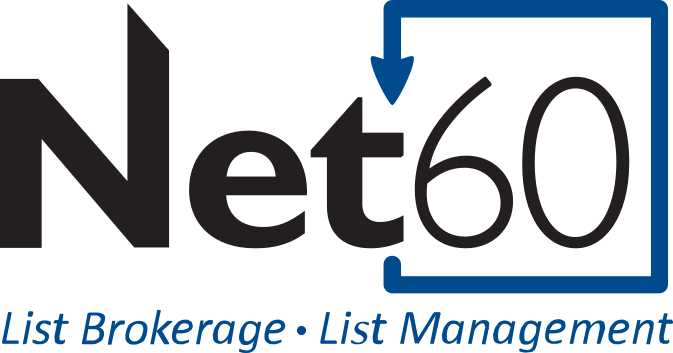Setting Success in Motion: How to Create SMART Goals for Your Direct Mail Marketing

By Chaim Lazar | June 24th, 2025 | Direct Mail, Blog
Direct mail continues to be a powerful marketing tool, especially when it’s done with intention. Unlike digital campaigns that can be quickly adjusted, direct mail involves tangible resources—design, printing, and postage—which makes clear goal-setting all the more critical. That’s why using the SMART framework to define your direct mail marketing goals is essential. SMART stands for Specific, Measurable, Achievable, Relevant, and Time-bound, and each element helps build a stronger, results-driven campaign. In this post, we’ll break down what SMART goals look like in a direct mail context—and how you can use them to drive real business results.
1. Specific: Define Exactly What You Want to Achieve
Setting a goal that’s too broad often leads to unclear expectations and scattered results. Instead, being specific forces you to hone in on what exactly you’re trying to accomplish. In direct mail marketing, this could mean identifying the exact number of leads you hope to generate, which product you’re promoting, or even which segment of your customer base you want to reach. For example, rather than saying, “We want to get more business,” a specific goal would be: “We want to generate 150 qualified leads from our spring postcard campaign promoting our new software platform to small business owners.” The more precise you are with your objective, the easier it becomes to build a targeted strategy and measure your success against a clear benchmark.
2. Measurable: Trackable Outcomes Are Key
Once your goal is specific, it needs to be measurable. This means defining exactly how you’ll track success. Whether it’s through the number of responses, the conversion rate, or total sales generated, your campaign should include measurable outcomes. Measurability also allows you to identify what’s working—and what needs to be improved. Incorporating tools like campaign-specific URLs, unique promo codes, QR codes, or dedicated phone numbers will help you gather accurate data. For instance, if your goal is to achieve a 5% response rate from a 5,000-piece mailer, you can track how many people engage with your offer and evaluate performance accordingly. A measurable goal turns marketing from guesswork into a data-driven process.
3. Achievable: Be Realistic, Not Restrictive
While it’s important to aim high, setting unrealistic goals can lead to frustration and wasted resources. An achievable goal takes into account your current resources, historical performance, and the realities of your market. For example, if your last direct mail campaign had a 2.5% response rate, jumping to a goal of 10% might not be realistic. Instead, setting a target like “Increase response rate by 1.5% compared to our last campaign” encourages progress while staying grounded. When goals are achievable, your team stays motivated, and you're more likely to deliver on your campaign promises. Ambition is great—but success comes from setting goals that challenge you within the realm of possibility.
4. Relevant: Align with Your Business Objectives
It’s easy to get caught up in vanity metrics or disconnected marketing tactics, but your direct mail goals should always tie back to larger business objectives. Ask yourself: Is this campaign supporting our company’s broader goals? Are we targeting the right audience with the right message at the right time? For example, if your company is launching a new service line aimed at real estate professionals, a relevant goal might be: “Drive 300 real estate agents to request a demo through our direct mail flyer within 30 days.” This keeps your campaign focused and ensures your efforts are contributing directly to business growth. Relevance ensures that your campaign isn’t just creative—it’s strategic.
5. Time-Bound: Set a Clear Deadline
Every good goal needs a timeline. Without a deadline, it’s easy to delay execution or lose momentum. A time-bound goal keeps your team on schedule and gives you a point at which to evaluate results. For example, instead of saying, “We want to increase sales with this campaign,” a time-bound goal would say: “Within 60 days of the campaign launch, we aim to convert 100 new customers from our targeted direct mail list.” This sense of urgency helps with planning production timelines, follow-up strategies, and post-campaign analysis. Deadlines also allow you to see what worked within a specific time frame and inform future campaigns more effectively.
Conclusion
Direct mail is far from outdated—it’s evolving. But to stay competitive and cost-effective, you need to approach your campaigns with intention. Using the SMART framework—Specific, Measurable, Achievable, Relevant, and Time-bound—gives your direct mail marketing a strategic backbone. It helps align your campaign with business goals, ensure every dollar is tracked, and ultimately, deliver results that move the needle. Don’t just send mail and hope it works. Define success, build around it, and get SMART with your goals. Your marketing—and your bottom line—will thank you for it.
_________________________________________________________________________________________________
Net60 Inc. is a leading list brokerage and list management company specializing in optimizing direct mail campaigns for companies across various sectors. Known for its exceptional service and innovative approach, Net60 Inc. enhances direct marketing efforts, enabling businesses to expand their client base more effectively. Our dynamic, experienced, and determined team collaborates closely to bring shared goals to fruition while excelling in their individual roles and client service.
